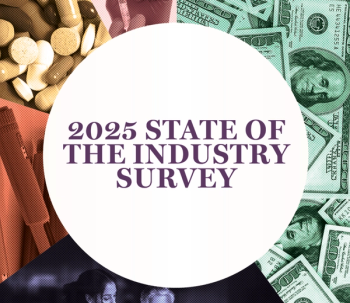
- Managed Healthcare Executive July 2019 Issue
- Volume 29
- Issue 7
3 Benefits of E-Prescribing
How the digitalization of pharmacy is transforming patient care.
Digital transformation in the healthcare industry has tremendous potential to change the way we approach patient care and to enhance the overall quality of care. This shift is particularly important in pharmacy, which is poised for digital innovation but is far-less advanced compared to other industries due to perceived barriers to adoption. Even in today’s digital era, many pharmacists still rely on handwritten prescriptions to provide patients with the medications they need.
Electronic prescribing, or e-prescribing, is one emerging innovation with great potential to mitigate the issues associated with hard copy prescriptions, such as forgery and fraud; illegible scripts leading to inaccurate fills,
One of these benefits is greater adherence. According to
Accuracy
A major opportunity for improvement is reducing prescription errors, and e-prescribing has proven to reduce the likelihood. When using hard copy scripts, the barrier of interpretation can contribute to inaccurate fills. This occurs when a pharmacist incorrectly interprets the physician's handwriting and inadvertently supplies the patient with the wrong drug, dose or quantity, which can adversely impact a patient’s health.
Related article:
A digitally received script removes the need for interpretation and drives a higher level of clinical accuracy and integrity.
Efficiency
With current e-prescribing systems, providers receive eligibility, formulary, and medication history in real time, providing visibility to lower-cost alternatives that can enhance overall cost effectiveness for patients.
As an added convenience, prescriptions can also be automatically sent to the patient’s pharmacy of choice. This eliminates the need for patients to physically bring a prescription to the pharmacy, drop it off, leave, and come back to pick up their medication. This also saves patients time, which can translate into dollars for people who don’t have to take time away from work to manage their prescriptions.
Safety
Finally, the positive impact of e-prescribing on patient safety cannot be understated. In addition to reducing the risk of an inaccurately dispensed drug or dose, e-prescribing gives physicians access to a patient’s prescription drug history at the point of prescribing. When physicians have access to this information, they can appropriately prescribe dose increases or add another concomitant medication to ensure positive therapeutic outcomes are achieved (e.g., blood pressure; HbA1c; cholesterol levels).
E-prescribing can also play an important role in managing controlled medications, such as opioids. Access to a patient’s prescription drug history can help mitigate fraud and plays an important role in addressing our nationwide crisis of drug overdose and death. Legislation has been introduced in the Senate that would require healthcare providers to employ e-prescribing for all opioids and other controlled substances for Medicare Part D recipients beginning in 2021,
Looking ahead
As adoption rates rise and the industry progresses toward mandated e-prescribing, physicians will be required to use the initial e-prescribing interface. This will further increase the quality and cost-efficiency of care for patients and minimize administrative burden for the provider and patient.
This transition has accelerated development of more comprehensive digital tools, including OptumRx’s PreCheck MyScript, which enhances the e-prescribing process by providing real-time, patient-specific benefit information at the point-of-care. As a result, members can see improved health outcomes, improved access to therapy, and significantly lower out-of-pocket costs.
Related article:
With progress toward the universal adoption of e-prescribing, our nation’s pharmacy care landscape will see increased efficiency of the prescribing process and lowering of incurred costs for all involved. From clients and members to physicians and pharmacies, e-prescribing promises better coordination of care and communication across the healthcare continuum.
David Calabrese, RPh, MHP, is senior vice president and chief pharmacy officer of OptumRx. He also is an editorial advisor for Managed Healthcare Executive.
Articles in this issue
over 6 years ago
How Machine Learning Is Revolutionizing Healthcareover 6 years ago
The Latest Autoimmune Disease Treatment Advancesover 6 years ago
Why Executive Compensation Drives Value-Based Care Transitionsover 6 years ago
Value-Based Care: Lessons Learnedover 6 years ago
The First Hep C Value-Based Bundled Payment Planover 6 years ago
Peptic Ulcer Disease Drug Pipeline: What You Need to Knowover 6 years ago
Do New Executive Healthcare Roles Make Sense?Newsletter
Get the latest industry news, event updates, and more from Managed healthcare Executive.





















































